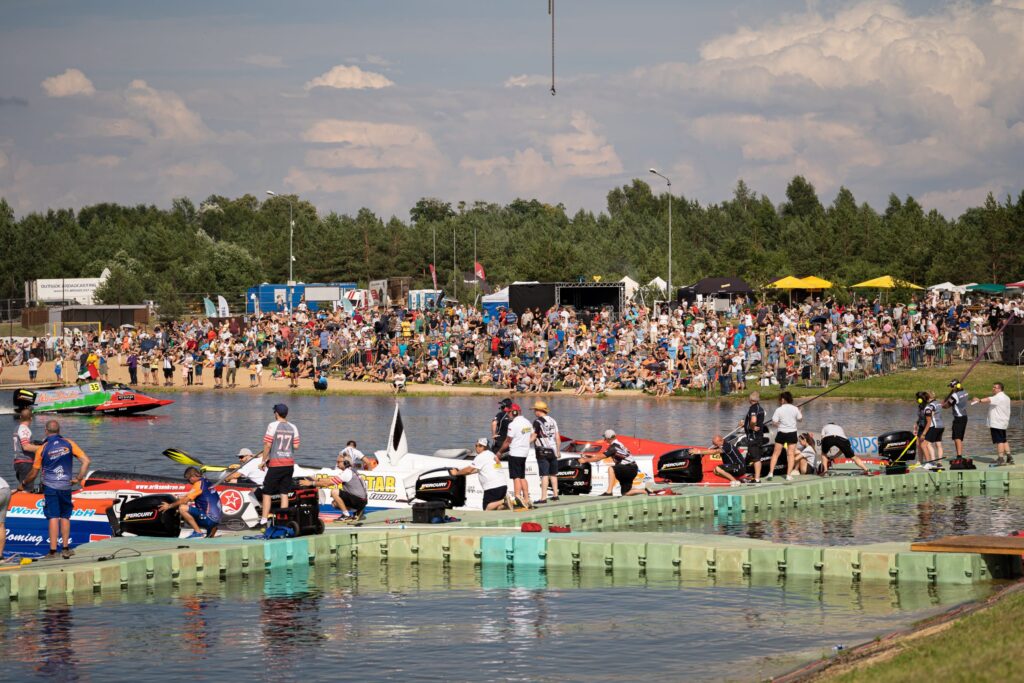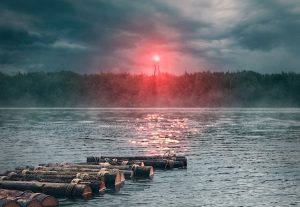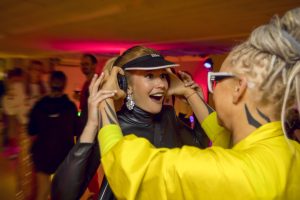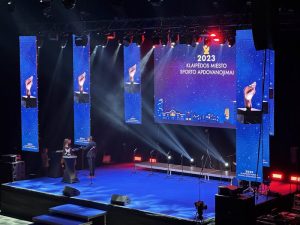With the Water Formula Championship coming up, he tells us what makes this race special
World F2 Water Formula will take place in Kupiškis Lagoon from 12-14 August
Championship. This sport has only recently started to gain popularity in Lithuania, so it's time to talk about the differences between water formula and car racing.
Just like in a regular car racein water formulae, lraces start from a standing start. At the start signal, 20 F2s are in the water at 100 km/h in just 4 seconds, and by the time they reach the start turn, the speed is already over 180 km/h. In the context of today's technology, this is not the greatest acceleration, but there is one important thing to keep in mind.

Stunning power-to-weight ratio
The 2.5-litre V6 engines are identical for all entrants and develop 200 hp. In motorsport, such power is only the first step, and it is common to see races around the world where the power output of the engines starts at least at 350 hp.
However, here the water formula F2 has one advantage. The carbon-fibre formula must weigh at least 550 kg with the pilot, which is more than twice the weight of a conventional racing car. When accelerating, the pilots lift the front of the formula by means of a motor drive and a moment later it is flying over the water.
The propeller plays a crucial role by staying permanently in the water. To put it mildly, it is as important here as tyres in motorsport. Each propeller is handmade and determines how the formula will accelerate, how it will sail through rough water and so on. Each team has at least 10-15 different propellers in its arsenal to suit every track or weather condition.
What are the brakes?
The Formula One car is now above water and heading towards the first corner at almost 190 km/h. In a car race, a driver would wait for the perfect moment to brake hard, but in a water formula, there is no such thing. But that's where the magic of cornering lies.
Before the buoyed turns, the water formula pilots "stick" the engine angle, thus lowering the formula on the water. The unique catamaran design of the Formula Formula makes it appear as if it is suspended in the water. The grip is so strong that the water formula can negotiate a 90-degree turn at 140 km/h and generate as much as 4.5 G of centrifugal force in the middle of the turn. Only F1 cars could match this kind of sudden dynamism in motorsport.

As if dry from water
The enormous speeds and neck-breaking forces require the strictest safety rules. In this respect, car and aqua pilots share common solutions, but everything else is very different. Whether racing on water or on tarmac, everyone must wear helmets, neck guards, special overalls and racing shoes that do not slip off the pedals. In addition, aquatic formula pilots wear a waterproof suit.
Both rally and circuit racers drive cars fitted with safety hoops. They protect drivers from severe crashes and body deformation. The water formulae do not have safety hoops, but strong impacts in the cockpit are prevented by the so-called "Capsule" (reinforced cockpit), which is made of several layers of carbon and Kevlar materials, with the addition of the "Air bag" airbag system.
In fact, aqua-formula is a relatively new sport, with its origins dating back to the 1980s. Back then, pilots sailed in open-top formulas made of wood plywood with powerful V8 engines. Over the years, safety has changed beyond recognition, and today each participant's formula is fitted with a crash box and a special airbag system.
When the waterform capsizes, a large airbag deploys at the top and lifts the bow to the surface. This is so that if the pilot becomes unconscious or otherwise unable to leave the ship, he or she can stay on the surface and wait for help.

Viewers see everything
The sport of car and water formula racing is also very different for those who watch it. Circuit races are usually at least 4 kilometres long, and spectators can only see the battles being fought live at the corner where they have decided to sit down.
In contrast, the water formula circuit is only about 1.7 km long and, due to to that takes place on a body of water whose allows the spectators on shore to see every intrigue throughout the race. This is the thrilling spectacle that those who come to Kupiškis Lagoon on 12-14 August for the F2 Water Formula World Championship will enjoy. Here, amongst 20 top teams from around the world, Edgaras Riabko will try to repeat his triumph of last year on his home track.
But it's not just sports lovers who will enjoy the event. A colourful crafts and entertainment fair will be open during the festival. During the fair, participants will have the opportunity to get to know historical crafts up close and take part in fun games. Meanwhile, both days of the event will start with a lively music fiesta with the most famous Lithuanian artists.
On stage will be the band 8 Kambarys, Jessica Shy, soloist KaYra together with live sound
group, Lietuvos balsas. Kartos" winners "HEY! MIX" and other performers. The summer evening on the shores of the beautiful lake will last well past midnight, as special DJ performances will provide dance rhythms.
We are grateful to the Kupiškis District Municipality and the ŠMSM for the opportunity to host the Summer Fiesta and the F2 Water Formula World Championship in the Kupiškis Lagoon.







